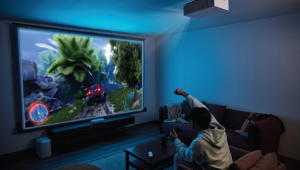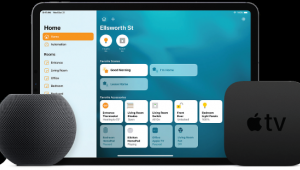Voice Control: The Good and the Bad, Part 1

I’ve had Amazon Alexa and Google Assistant in my home for some time, using them to control various smart home devices such as lights, a thermostat, and door locks. I also use them to kick off “events” such as “dinner” and “movie time.” But if the idea of voice control conjures a vision of walking around your home and having it respond instantaneously to your bidding by simply calling out commands, you’ll want to read on.
First things first: When using a voice-controlled speaker, you need to accept a certain level of privacy loss. These devices are listening all the time (unless you turn them off, which kinda defeats the purpose) and if that idea bothers you, then you should probably reconsider using them. Also, while the devices are supposed to only respond to wake words (“Alexa” or “Hey, Google”), they will occasionally respond out of the blue when you are talking or watching TV.
If you’re okay with giving up privacy, voice-controlled speakers offer loads of features, with new uses that you’ll continue to discover over time. And with entry models often selling for less than $30, they are inexpensive enough to sprinkle around your home for even greater flexibility.
Both Alexa and Google Assistant will do a great job handling anything you ask directly of a compatible device. Want to know the weather, learn how to spell a word, hear a joke, or get some trivia? How about directions or setting a kitchen timer or alarm? Both systems handle these kinds of requests in a prompt manner and with almost 100 percent accuracy. I have noticed that requests process faster the higher your Internet upload speed is, since devices first relay the request to the cloud to be analyzed.
Connect a supported music service like Spotify or Pandora to your voice account and both Alexa and Google Assistant devices will quickly start music playback, whether it’s a request like “play rock music,” something more specific like “play Art Pepper radio,” or even something vague like “play Fiona Apple’s new album.” (Alexa currently has the edge over Google Assistant in the number of compatible services, with Amazon Music, Tidal, and Apple Music all supported.) You also get the ability to “link” devices to other speakers, which lets you use the microphone in an Amazon or Google device to command audio to play out of another, better-sounding, speaker. And commands like “turn it up,” “make it louder,” or “set volume to X” are great for making hands-free volume adjustments.
If you want to use voice commands mostly for playing music, a device like a Sonos Move or Play:1 speaker with built-in Alexa or Google Assistant can provide a satisfying experience and decent sound quality. I’ve also found that the far-field microphones in Sonos products far outperform those in products from Amazon and Google, allowing me to issue commands from far away, and even over loud music.
Another great voice control application is video search. For example, I can grab my DISH Hopper DVR or Sony TV (both of which use Google Assistant) voice remote and say “show me James Bond movies,” “turn to ESPN,” or “search YouTube for home workouts.” Meanwhile, the voice remote included with my Apple TV box works well — and much faster than those included with the DVR or TV — whenever text input is required. In both cases you’re talking directly into a microphone with a voice remote, so you can speak more quietly over any music or movie that is playing and still have your request understood.
Along with simple requests, both platforms allow for the creation of routines that can be kicked off by a simple voice command like, “Good morning” or “Good night.” These can use fairly elaborate macros that include things like announcing the weather and reading the news, setting light levels around the house, adjusting temperature, raising and lowering blinds, locking doors, and turning music on and off. (Controlling lighting, locks, HVAC, etc., requires devices compatible with a specific voice platform, and often a smart home hub of some type.)
In my house, outside of constant weather updates — or my 4-year-old asking for jokes — one of our biggest uses of voice control is to operate a Lutron RadioRA2 and Control4 lighting system. Both Alexa and Google Assistant work with a host of lighting controls, many of them designed for DIY installation. Getting to say, “Hey Google, turn off the kitchen lights,” while walking to the couch with my hands full is a perfect use for voice control. Both Alexa and Google Assistant typically handle these requests quickly and correctly, though there are still random times when Alexa’s light will spin and nothing happens, or it will say “that device is unavailable/doesn’t exist/is not responding.”
Next time I’ll delve into some of the more custom installation-centric features of voice control and how it can be used as part of an advanced automation system. I’ll also discuss why many installers remain a bit wary about incorporating voice control in their projects.
- Log in or register to post comments































































